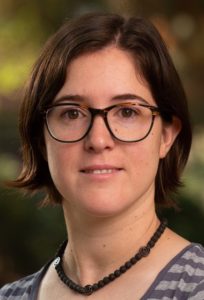To further thank and recognise the support from our excellent reviewer community, we are highlighting reviewers who have provided exceptional support to the journal over the past year.
This month, we’ll be highlighting Dr Ana Bahamonde, Professor Andrew Sue and Dr Felix Plasser. We asked our reviewers a few questions about what they enjoy about reviewing, and their thoughts on how to provide a useful review.
Dr Ana Bahamonde, University of California Riverside. Our group focuses on advancing the understanding of Ni catalysis, specifically addressing its tendency to alternate between 1- and 2-electron mechanisms. Our goal is to achieve a deep enough understanding of what drives each reaction pathway, enabling us to leverage this knowledge to improve existing catalytic systems.
Professor Andrew Sue, Xiamen University. Our research group utilizes dynamic covalent chemistry and coordination-driven assembly to construct nanotubular cavitand hosts, exploring molecular recognition and behavior within these confined spaces.
Dr Felix Plasser, Loughborough University. My research is in computational photochemistry. We use computer simulations to learn how molecules interact with light to aid in the design of next-generation materials.
What encouraged you to review for Chemical Science?
Professor Andrew Sue: My very first research paper during my PhD was published in Chemical Science, making it a journal that holds a special place in my heart.
Dr Felix Plasser: I believe that reviewing is an important part of the scientific process. When I was first asked to review, I was also somewhat honoured that Chemical Science put their trust in me as a reviewer.
Dr Ana Bahamonde: When reviewing a paper, I invest significantly more effort in critically evaluating every hypothesis and explanation compared to when I read general literature. This approach helps me explore different perspectives and learn from others.
What do you enjoy most about reviewing?
Dr Ana Bahamonde: What I enjoy most is that, every now and then, I get the opportunity to help authors refine their findings or delivery.
Professor Andrew Sue: I am motivated by the opportunity to engage with novel research firsthand, gaining early insights before they become publicly available. I also appreciate the chance to contribute to shaping these papers and ensuring their quality and impact.
Dr Felix Plasser: I enjoy having a chance to shape the work that is being published and to provide a critical assessment of the underlying methods. Reviewing also provides a great chance for staying up to date with current research in my area.
Do you have any advice to our readers seeking publication in Chemical Science on what makes a good paper?
Dr Ana Bahamonde: I believe a good paper offers a novel solution to an unresolved problem. It is crucial to clearly emphasize the paper’s originality and the specific outstanding issue it addresses in the introduction.
What advice would you give a first-time author looking to maximise their chances of successful peer review?
Dr Felix Plasser: Make sure to take all reviewer comments seriously. Even if you are frustrated that the reviewer does not get your point, act on their comments. You can assume that readers won’t get your point either – so try to improve your paper rather than arguing with the reviewers.
What are you looking for in a paper that you can recommend for acceptance in Chemical Science?
Professor Andrew Sue: I look for papers that present brilliant ideas backed by rigorous execution, along with an effective and scholarly presentation. Additionally, I highly value unexpected, serendipitous discoveries that provide fresh insights and have the potential to inspire new directions in research.
Tune in soon to meet our next group of #ChemSciReviewers!
If you want to learn more about how we support our reviewers, check out our Reviewer Hub.
Interested in joining our ever-growing reviewer community? Apply here now!
































